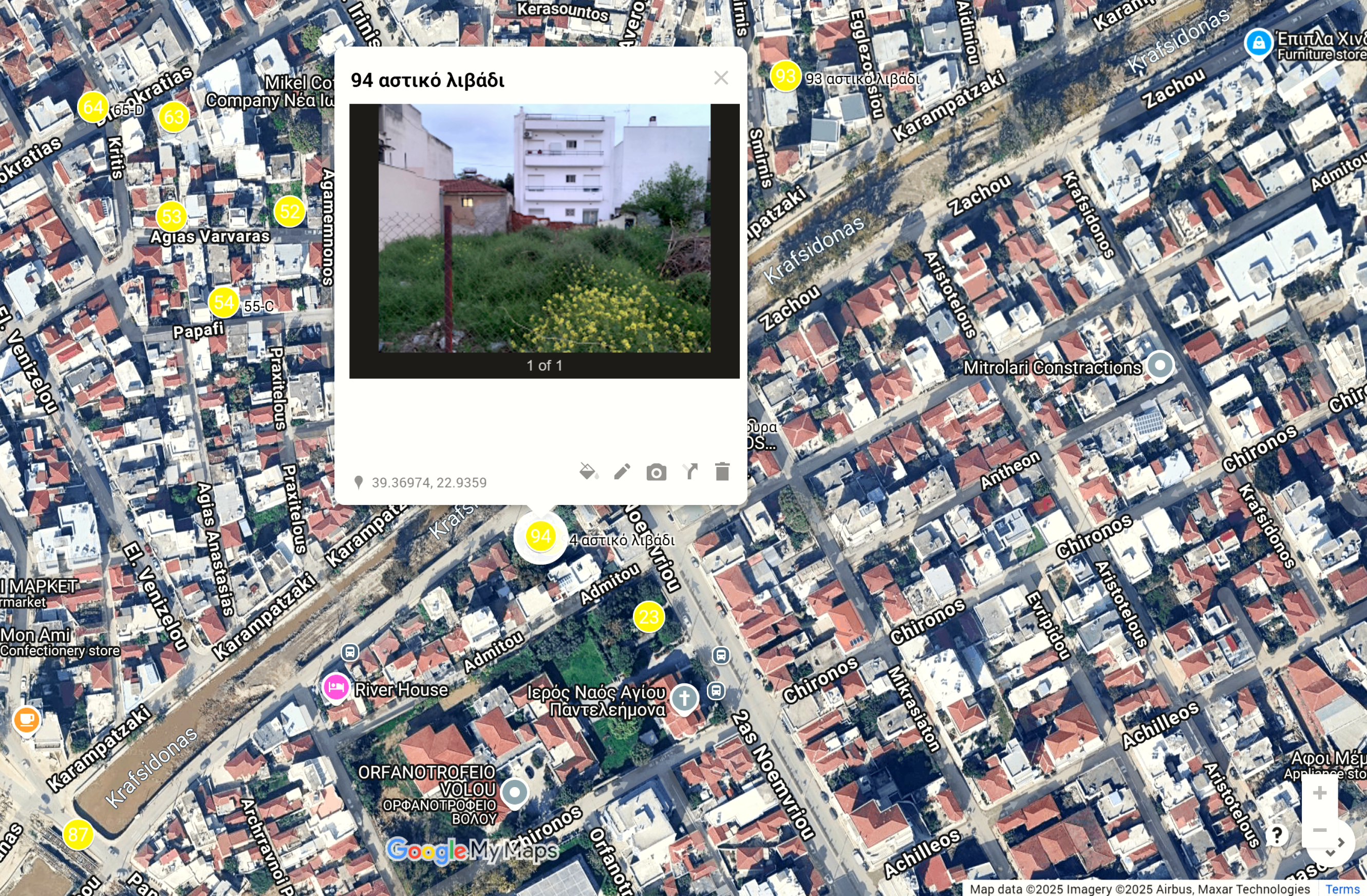Design Studio Required Elective at semester(s) 6, 8, ECTS: 12
Generic Competences: Ability to search for, process and analyse information from a variety of sources using the necessary technologies, Ability to adapt to and act in new situations and cope under pressure, Ability to make reasoned decisions, Ability to work in a team, Ability to work in an international context, Capacity to generate new ideas (creativity), Ability to interact constructively with others regardless of background and culture and respecting diversity, Commitment to conservation of the environment, Ability to demonstrate social, professional and ethical responsibility and sensitivity to gender issues.
Visiting Critics:
Dominika Pazder, Bartosz Kaźmierczak, Agnieszka Rumież, Poznan University of Technology.

Volos Urban Voids _ Discovery _Class Collective Map
Knowledge, Comprehension, Application, Analysis, Synthesis, Evaluation
• Analyse and evaluate timeless and contemporary examples of biophilic design from around the world and investigate design ontologies for the green transition in architecture's second digital turn.
• Become familiar with design methods related to adaptive reuse, heritage preservation in relation with the natural regeneration of the city that have redefined state of the art architecture including participation and recycling.
• Practice architectural design exploring the small scale of the micro-structure and the scale of the environmental entity.
• Develop skills in model building by understanding the role of the prototype as a generative medium of architectural thinking.
• Understand the role of architecture as a spatial and material practice that creates added social value.
The course explores urban voids, a category of unbuilt space that has been discussed in relation to the term terrain vague. Focusing on outdoor urban spaces that appear abandoned, or degraded, the intervention location is being dispersed in Volos and Nea Ionia where a multitude of locations will be explored through experiential mapping processes.
The importance of urban voids is particularly important for city resilience in times of climate crisis Urban voids, within the context of the course they are considered 'citizenship laboratories' driving the urban green transition.
The course methodology follows the organization of a pattern language as formulated by Christopher Alexander in his influential book A Pattern Language (Alexander et all 1977) exploring both the microscale of architectural and the scale of environmental unity. The paradigm of patterns is in this course enriched by the displacement of the human subject of architectural design towards the nature culture hybrids, a state of symbiosis of non-human biota.
The concept of habitation – of inhabitants – becomes problematic, but it expands as the humanistic vessel of life is now inhabited by both non-living super-humans, such as sunlight, soil, water, wind, and living non-humans: plants, trees, insects, mammals, fish.
Operations rather than functions on the one hand and conceptual design of practices for the green transition and the preservation of biodiversity on the other will determine the architectural objects and performative actions that will be composed. The architecture of experience and atmosphere determine the palette of our materiality.
For the successful completion of the course students produce an individual or group project. Students' evaluation assesses both their participation in class as well as the quality of their project.
Βυζοβίτη, Σ. (2017) Μικροκατοικία-'Ατλαντας για Αρχιτέκτονες, University Studio Press
(σύγγραμμα https://service.eudoxus.gr/search/#a/id:68372928/0)
Alexander, C., Ishikawa, S., & Silverstein, M. (1977). A pattern language: towns, buildings, construction. New York, Oxford University Press.
Clement, G. (2004) Manifesto of the Third Landscape, Trans-Europe Halles.
Jodidio, P. (2017) Nomadic Homes. Architecture on the move, Cologne: TASCHEN.
Lopez-Pineiro, Sergio. (2020) A Glossary of Urban Voids. Berlin: JOVIS.
Leckart, S., Klein, Z. (2015) Cabin Porn : Inspiration for Your Quiet Place Somewhere, London : Penguin Books Ltd.
Penelope Papailias, P. (2024). Water remembers. Το νερό θυμάται. [podcast] Department of Social Antrhropology, University of Thessaly. [in Greek]. Available at: https://www.pelionsummerlab.net/tonerothimatai.html (last access 16.02.2025).
Roke, R. (2016) Nanotecture: Tiny Built Things, London: Phaidon.
Wainwright, T. (2018) Pet-tecture: Design for Pets, London: Phaidon.
biophilic design, green transition, urban accupuncture,green urban regeneration, micro-structures, performative urban actions, more than human.
